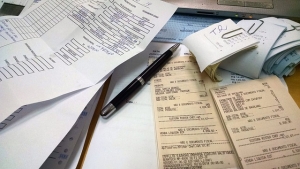
We are coming up quickly to the tax deadline of April 15th, so if you are needing signatures from you online clients to complete their tax returns, you can get their signature easily by using E-Signature technology.
Prior to 2015 only handwritten signatures or signatures captured on signature pads were accepted for forms 8878 and 8879, which authorize an Electronic Return Originator (ERO) to e-file tax returns to the IRS. In March 2014, new IRS rules allowed the forms to be signed by taxpayers electronically, making it easier for you, the accountants and tax preparers for clients, to electronically file customers’ tax returns. The Rules of Thumb blog from MoneyThumb has listed the following three rules you must follow for using an E-Signature:
IRS Mandates
The first step in selecting secure, reliable e-signature technology is to make sure it meets IRS mandates for e-signatures. For IRS documents, an e-signature service must do the following:
1. Identify the person who signed the document. E-signature providers must be able to calibrate their identity authentication processes to specifically meet IRS requirements, beginning with the basics: your personally identifiable information.
A signer must provide his name, Social Security number, address, and date of birth and the information given must be consistent with information provided through record checks with credit bureaus or similar databases. E-signature technology must be able to record this information, too.
For a remote signer, the software must also use knowledge-based authentication (KBA) to further verify the taxpayer’s identity. This process asks the signer a series of detailed questions generated from information found in public databases that are typically not known by anyone other than the signer (and isn’t easily found in someone’s wallet).
The software must record that a signer successfully passed this form of authentication, per National Institute of Standards and Technology requirements. And after three tries – you’re out. If there are three failed KBA attempts, the signer must authorize the documents with a handwritten signature. Also, if there is more than one taxpayer on the return, the signature process must be designed to authenticate each taxpayer separately.
2. Retain integrity of electronic records. Each e-signature must be linked to its respective electronic record, or there should be proof that the signature is a valid one. An e-signature should not be able to be removed, copied, or transferred to falsify a digital record.
Once signed, the document must have the ability not to be tampered with, so the e-signature service must use techniques to lock a document and prevent it from being modified. Storage systems must also contain a retrieval system with an index and the ability to reproduce legible hard copies of electronic records.
3. Create a digital paper trail. For IRS compliance, e-signature technology must record the digital image of the signed form, the date and time of the signature, the taxpayer’s computer IP address, the taxpayer’s login identification/user name, identity verification (the taxpayer’s KBA results showing he passed), and an audit trail that reflects the completion of the process by the signer. The ERO must keep this information on hand and be able to provide it to the IRS as requested.
As an accountant or other tax preparers, if you follow the 3 above steps the Rules of Thumb blog from MoneyThumb has suggested when using E-Signature for client's to sign their tax documents, you should have no trouble at all.





















One comment
Fluix
It is good that the IRS has relented and allowed taxpayers to sign forms electronically. This allows tax preparers to limit their physical contact with their clients, and in general it is simply convenient and cost-effective